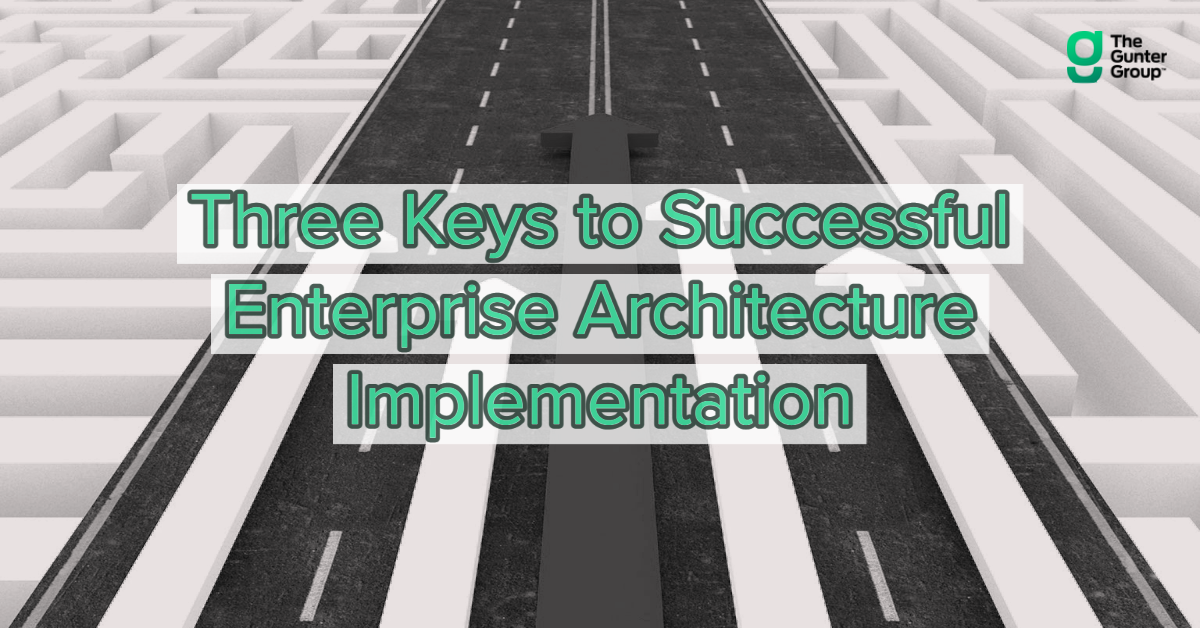Over the last year we have supported clients spanning a variety of industries. Some of our most impactful client engagements have been in the area of Enterprise Architecture.
As a way to further support our clients, we hosted a special Idea Exchange focused solely on the process of transforming Enterprise Architecture and increasing value to organizations with a more agile approach.
In that Idea Exchange we discussed three keys to improving Enterprise Architecture:
1. The quality of Enterprise Architecture should be determined by the outcome it enables.
Successful outcomes result from leadership teams and stakeholders clearly aligning upfront on the problem or opportunity. Identifying the desired outcome can be supported through an upfront planning process which asks questions such as:
- What are we trying to do?
- Why are we doing this?
- What is the business value and cost proposition?
- How and why will users adopt or embrace the end result?
2. Evolving roadmaps = useful roadmaps.
An agile enterprise architect can leverage the “perfect” roadmap as inspiration to identify a good solution which enables short-term benefits and sets the business up to realize the perfect solution.
For example, a five-year roadmap that started two years ago is not valid anymore and COVID-19 is a dramatic example as to why.
Additionally, new technology and capabilities that can help your business operate more effectively will come to market, which were not part of your original roadmap. For this reason, it is important to regularly review and update roadmaps incrementally.
3. Changing direction is an essential activity.
Agile methodology is not only about making it okay to change direction, it is about encouraging and supporting this behavior. Identify your “North Star” but recognize over time the path to your “North Star” will change.
A critical part of the agile mindset in Enterprise Architecture is that it can be preferable to have assumptions, even if some of the assumptions prove to be wrong as progress and developments are made.
Institutional acceptance of this creates the healthiest, most productive, most agile Enterprise Architecture process. The team should be inspired and supported to change direction when it makes sense and explore preto-typing and interim testing as part of their evolving problem solving processes.
In closing we have been inspired and motivated by the proliferation and maturation of agile practices in recent years. Unfortunately, Enterprise Architecture has lagged behind in its own progression and application. While some see this misalignment and move on, we see it as an opportunity to help organizations effectively transform their architectural activities and support clients in an effort to successfully drive innovation across their technology ecosystem.


